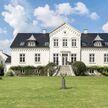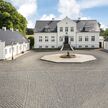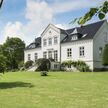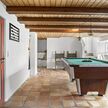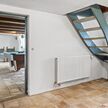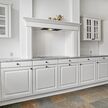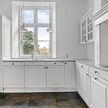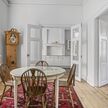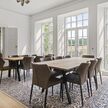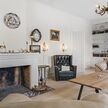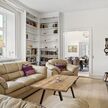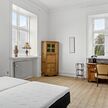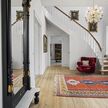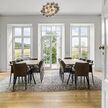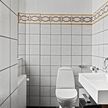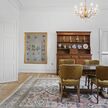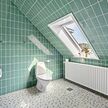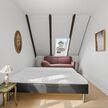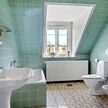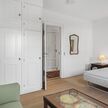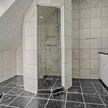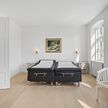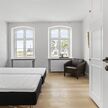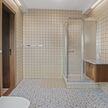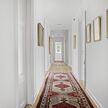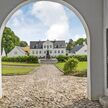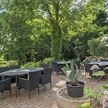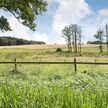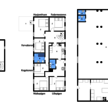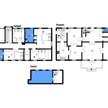Hvolgaard Hovedgaard has a very long history - and is beautifully located right in the middle of nature. You feel and experience both when staying at the estate. As a holiday guest, on festive occasions, or when attending a business meeting that requires a special setting and extra inspiration.
The whitewashed manor of Hvolgaard Hovedgaard is beautifully situated on a small hill in the Ølholm valley where today’s three-winged manor is surrounded by an equally beautiful Danish landscape. The details of the buildings and the light expression make the estate appear stately, classic and elegant.
The main building and the home farm were built around 1870 but there is no doubt that the place has been inhabited since the Middle Ages.
A cosy property with soul and accommodation
The cosy property is full of soul when receiving guests - regardless of the reason for their visit. At the same time, there is plenty of accommodation both smaller and larger groups, kitchen facilities and the opportunity for various activities for groups or a whole family on a joint holiday. This also applies to the fine, green gardens that match the green surroundings of Hvolgaard. In every way possible, Hvolgaard Hovedgaard is a fantastic setting for a joint holiday or an amazing party.
Monks and duellists
Around Hvolgaard Hovedgaard, there is evidence of the long history of the property. The property was mentioned as far back as 1434 in a document stating that Hvolgaard belonged to the episcopal seat of Ribe. It was not until the Reformation in 1536 that the farm was transferred from the bishop's estate to that of the crown.
So where, previously, church vassals and monks had come and gone and enjoyed an everyday life at Hvolgaard, it was now lord lieutenants. One of these, Jørgen Sested, bought the estate from the crown in 1573.
Jørgen Sested, who was a Holsteiner, had a colourful background and profile before acquiring Hvolgaard Hovedgaard. At first, in the early years of the reign of King Frederik II, he was a nobleman at the court. He later, in 1561, became a so-called 'køgemester', i.e. a 'master of the kitchens'. That year he also killed a Saxon nobleman during a duel in Copenhagen but this did not affect his career.
From immensely rich nobility to the officers’ saddle
From 1588, when the nobleman Albert Friis bought the place, different immensely rich noble families owned Hvolgaard. Names like Friis, Holck and Rantzau are found among previous owners. From the end of the 17th century, the ownership of the estate passed to common owners with (new) noble ambitions. The first example is Hans Henrik von Levetzow, the first owner of Hvolgaard who was of the new, so-called officers’ saddle and his son-in-law, Detlev von Brockdorff, who took over the farm, was of the same background. He then passed it onto his colleague and son-in-law, Hieronimus de la Mare.
One of the most prominent owners of Hvolgaard was Ludvig August Steensen-Leth who owned the property for 49 years. During this long period, his left his clear mark on the property and was behind the construction of the present main building, amongst others.
Close-by opportunities, experiences and attractions
Hvolgaard Hovedgaard is not merely well situated in beautiful, scenic nature. The estate and the property is also located in East Jutland which provides many opportunities for its guests. Cosy Vejle is not far away and where most people will find that both the town and its beautiful river valley have much to offer. In addition, there are exciting attractions nearby such as Givskud Zoo/Animal Park, which is quite close, and LEGOLAND® in Billund, which offers experiences for most people.

